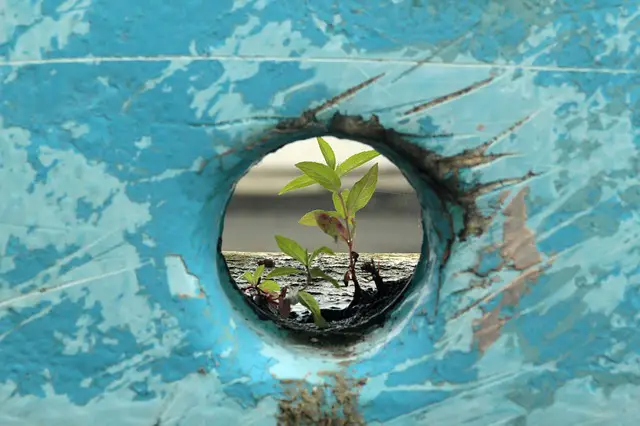You can’t really count on the exterior world, anybody out there, or even your own body in general. But if everything else fails, you can still trust your mental resources. Resilience comes in just there. It contains qualities such as courage, loyalty, and kindness that offer you the opportunity to get through difficult times, overcome tension, and follow your heart to seek opportunities.
The essence of mental well-being is resilience – it is the core key component of prosperity and inner harmony. What’s more, you already have what you need to flourish inside you. Developing resilience ultimately comes down to manipulating your own mind’s powers, and thus transforming your mindset for the better.
Fortunately, the development of resilience requires practical activities and quick strategies you can integrate into your everyday lives. And in addition to understanding the psychological processes on which resilience is based, you will be able to support yourself – regardless of what life has to offer you.

Chapter 1 – The road to health starts with compassion for yourself.
Assume that on a cold afternoon in October, you climb a steep mountain. The snow transforms to frost, it gets dark and then you can’t see where you’re headed. A wrong step might result in injury or worse. You get tired, you get stuck and you get scared. What are you doing?
So, recognizing the circumstance is the initial step in ensuring sustainability. To refuse or fight the risk may be fatal. But once you understand the truth – and your emotions – you can be able to open up the mental space to consider your alternatives.
This is what rescued the writer when he found himself in this situation. He made the decision to sit up on the hill, bundled up in a blanket until the first rays of the sun, and survived to say the story. If he had hesitated and made a poor decision, the story may have turned out to be quite different.
But acknowledgment isn’t only for crises. You should make it an important part of your life. It begins with self-compassion.
Compassion is a mixture of warm emotional empathy and a desire to alleviate pain. We can sense it for others, as well as ourselves.
The majority of us don’t have any trouble feeling compassion for others, but we fail to feel it for ourselves. But don’t be afraid – it is something that we can improve by pursuing a few fundamental rules.

To begin practicing the art of self-compassion, you must create recurring encounters from it. This you can achieve by a quick series of mental activities. Firstly, put previous compassion memories to the front of the mind. Secondly, reflect on them and experience them to the utmost degree possible. For instance, you might start by recalling a time where you supported someone else-maybe helping a sick person. Think of how it felt, and what sorts of thoughts were passing through your mind. And that’s how compassion feels. Now implement this same approach to yourself. Have an idea of what being your own friend looks like, and remain loyal to it.
Self-compassion doesn’t only make you feel better right now; evidence suggests that the more self-compassion you have, the more resilient you become in the long run. This is because it reduces the propensity to judge yourself, and instead, lets you boost your self-esteem. It can even help your personal and professional lives become more ambitious and successful.
Chapter 2 – Mindfulness lets you stay relaxed in difficult moments.
Have you ever seen a documentary on nature? If yes, the situation that follows may be recognizable. Somewhere in Africa, a group of zebras grazes happily on a green grassland. They are alert and keep a close eye out for threats, but they are still relaxed and happy. No sign of distress. But then all of sudden a lion emerges. Panic emerges, the group is roaring into action and animals are fleeing in every direction. Then it stops as suddenly as it starts, and the group goes back to a peaceful yet vigilant state of rest.
That is the model for all of our lives, in a nutshell. We are calmly alert to our surroundings at times; at others, we need to respond immediately.
But while zebras are excellent at regaining equilibrium right after a dramatic incident such as a lion attack, most humans also need some assistance staying in the region of relaxed responsiveness.
It is where mindfulness comes in.
Mindfulness involves living in the present time – and becoming mindful of it – rather than disturbing oneself. For a moment or two, it’s pretty easy to do, particularly when nothing goes wrong. The hard part is to keep remaining mindful under stressful circumstances, such as in the midst of a fight. These are the moments we need it the most. That’s because remaining mindful allows us to reduce the effect of negative experiences while helping us to make the most of pleasurable ones.

Mindfulness depends upon controlling your concentration and rejecting judgment. Just see what happens in your head at the time instead. The more you practice it the more it sounds normal. It is as though you would work out a muscle.
To begin, you should try to note the moments that you’re not at ease-and just let yourself be. You may be watching the world go by from the bed, or focusing on your day before drifting off to sleep. The sense of relaxed concentration, without attempting to alter something in your life, is what it feels like to be mindful.
The more mindful you are, the more easily you will manage your resources, refresh, and refuel. By doing so, as if it were a lion attack, you’ll stop going into a whirlwind of panic with any small event. Simultaneously, if anything happens that needs a more immediate response, you’ll be prepared and it won’t strike you too hard.
Chapter 3 – You need a decent dose of courage to overcome the problems of life.
He found something that left a profound impression when the legendary physician Viktor Frankl was trying to escape the struggles of life in a Nazi death camp. Ultimately he wrote a novel about it, Man’s Search for Meaning. What he found was that despite their own tremendous misery, some individuals had the potential to remain compassionate and support others. Sometimes this took the form of soothing their fellow inmates or giving away their own bread and water. He called it “the last of human freedoms” – the ability to choose our response, regardless of the circumstances.
If this ability may be wielded under the most egregious of human situations, it is possible in daily life. It comes down to exercising agency – the foundation of real grit.
Grit’s about being resilient and resourceful and a sense of control is one of the main ingredients. It’s the idea that you can make something happen in the universe, instead of going through with the stream of helplessness.

Agency is about feeling like a cause rather than a consequence. There’s nothing big there has to be. It comes into play if you want to wear a white sweater instead of a green one, or whenever you disagree with the viewpoint of another. It’s your capability to be involved rather than passive, to take action, and to decide your life path.
The agency’s inverse is helplessness – the sensation that when faced with obstacles, you are weak, large, or small. Unfortunately, it’s something that so many of us have embraced on our way through existence. This is what is called learned helplessness, and it originates from unpleasant experiences such as being bullied in school or having an undesirable partner. Hopelessness and negativity come with a feeling of helplessness and it can even result in depression.
Luckily you can unlearn helplessness and enhance your sense of agency.
To do that, begin searching intentionally for situations in your life where you can make a decision or affect what’s going on. Make sure that you concentrate on your own sense of being an active agent in this case. When the experience feels like a push, that is even better. For instance, it may be agreeing to do one more repeat of a difficult workout at the gym, or restating your argument assertively in a meeting where you are not noticed.
Chapter 4 – Thankfulness helps you get the best out of good feelings.
Think of the last time you were grateful. Perhaps you loved a wonderful meal that a friend had prepared for you. Or maybe it was a more profound sense of appreciation, like gazing up on a sunny day at the blue sky. It felt great whatever the circumstance, right? Sometimes we get so nervous and tired working to ensure we feel good in the future that we are missing all the aspects that we already feel good about. But if you take a few minutes to think about it, you’ll definitely find lots of things in your life for which you’re grateful.
Gratitude doesn’t just feel great; it also brings many advantages. Researchers have observed that while lessening anxiety and sadness, it increases confidence and satisfaction. And it is not even the whole case. Gratitude also helps in healthier interactions, less solitude, and improved sleep. Along with those advantages comes – you guessed it – more resilience.
With thankfulness being so valuable, how can you create more of it in your everyday life?
One important way to cultivate gratitude is by making it a daily part of your day. For instance, you could write a note to give thanks for yourself and place it on your table. You might even keep a record of everything you are thankful for or write a letter to an individual whom you particularly admire.

Another way to maximize thankfulness is to create the maximum amount of time for tasks that can bring you joy. It might not always be convenient, particularly if you are going through a difficult period – be it issues with the relationship or physical illness. Often many people have internal barriers that keep them from experiencing pleasure. These can make you feel joy as an excessive joy, or even build a feeling of guilt.
Yet pursuing happiness isn’t about ignoring the negative side of reality. In fact, you can find it easier to make room for more happiness in your life by recognizing that pain and suffering are the normal aspects of human nature. Try to note the tiny enjoyments. These could be the sound of music you enjoy, the flavor of your favorite dessert, or even a soft, comfortable feel of a cushion.
The tougher your life gets, the more important it is to enjoy and internalize those pleasurable emotions – they are the inner energies that give you the courage to keep working.
Chapter 5 – To become more resilient you can increase your confidence.
Have you ever seen children learn how to walk? If that is so, you may have observed that the most enthusiastic ones receive the right kind of reinforcement from their families. They give them the opportunity to learn – with just enough support to make them feel confident and happy whilst also ensuring their kids don’t get hurt.
By the time kids turn two, they’ve acquired countless interactions that influence how they connect in their relationships with others – as well as with the environment around them. Inevitably, those encounters influence their sense of confidence.
A sense of safety and comfort are the most important facets of our childhood that contribute to our burgeoning sense of confidence. This is what our carers offer us when they are warm, willing, and trustworthy. Regrettably, if your guardians were distant or not present with you when you needed them, you are more likely to grow up feeling a sense of vulnerability – and become less resilient.
If you don’t make a significant attempt to improve, the lessons learned in childhood will stick with you for life. Luckily there are tried and tested ways to learn to be more confident and safe.
For instance, look for interactions that can make you feel cared for in your current life. It can be any type of care – and it doesn’t even have to come from a human. It may have come from a pet or a divine entity. The point is to agree that you have the sense of being cared for. By concentrating on how you consistently experience this, you’ll become used to feeling like someone worth caring for – and your inner core of confidence will develop.

Still, even though you’ve been lucky as a child with a loving family, nobody can escape life ups and downs. Fortunately what you will understand is how to react appropriately to stressful events in life. This is especially important, as the majority of us not only struggle from an event’s initial discomfort – we introduce a second layer of unhelpful responses to the mixture too. Perhaps these responses inflict much more needless misery than the actual discomfort itself.
So make an attempt to be mindful of your emotions as you find yourself adding fuel to the flames. Try making a deliberate decision when you hear the critical voice in your mind to ignore what it tells. In your self-belief, that way, you will grow stronger.
Chapter 6 – If you remain relaxed, you will be more resilient.
If you’re a wild animal, there are usually two forms of errors you can make. Firstly, you could persuade yourself that when there isn’t one, there’s a tiger hiding in the woods. Not the sweetest experience in the world! You can fear for no reason, but there’s no harm done.
The other mistake animals can make is to imagine that there is no one in the bushes – just as the tiger is about to attack. Many times this type of error is much more severe.
It’s no wonder that our brains have adapted to try to make the first, innocent kind of mistake – just to stop the fatal one. In other words, we appear to overestimate risks while still undervaluing our abilities to deal with them. The outcome? A ton of fear that doesn’t have any useful purpose and consumes us of the power that we need to address real issues.
Having to see how it works is an effective tool against fear. You can then hack the mechanism to your benefit by doing so. All this is attributed to one dynamic mechanism: the autonomous nervous system. It is the control hub of our body, which is responsible for responses to fight or flight. It has two branches; like a car’s brake and gas pedals, you might think of them.
Let’s first examine the brake. It is the parasympathetic nervous system. It makes your pulse rate drop and you feel comfortable. You feel at ease while it’s functioning, and the body refuels.

The other type of nervous system — the sympathetic one, or the gas pedal — makes us ready to function. When triggered it accelerates the pulse and sends stress hormones through the blood. When your body starts to revive, so does your subconscious. As a result, the thoughts can become more serious, or even more nervous.
These two branches work together like a seesaw: as one ascends, the other descends. In other words, the happier we become, the more sympathetic behavior we dampen – and the ensuing tension.
And you’ll need to understand how to leverage the strength of the body and its two nervous systems to alleviate anxiety and maximize relaxation. The basic act of breathing is one quick technique you can use. The parasympathetic nervous system – the brake pedal – controls exhalation, while the sympathetic nervous system – the gas pedal – is responsible for inhalation.
Miraculously, something as easy as slowing down your breathing can help you relax and stop anxiety. In reality, this could entail you inhaling for three seconds and then steadily exhaling for six seconds.
Chapter 7 – Motivation is about strong desire.
Let’s imagine that you are dining at a friend’s house. You finish off two desserts after you have stuffed yourself with an incredible dinner. Your buddy then takes out the third one, gives you a bite, and asks if you want to. It is delicious, of course, and a part of you is tempted to ignore the fact that you’re much too full to have another taste. To put it another way, you may enjoy the dessert but you don’t want it at this very moment.
This scenario goes to illustrates that there are very different things to like something and to desire it. Of course, liking will bring a lot of joy to you. But when it becomes a persistent urge, our sense of purpose will lead us astray – and nibble away at our resilience.
If you ate the third dessert, after all, you’d definitely regret it.
Resilience is far more than just dealing with the struggles of life and living with tension. It’s also what gives you the drive to search into interesting new possibilities. But occasionally motivation will result in conflict with how you treat your desires.
This is where desire comes in. You will make sure you are in control of where your motivation leads you, by desiring strongly.
But what is it that causes liking and wanting such distinct forces over us?
Well, typically wanting is based on a void you are trying to fill. It comes in with a sensation of strain. You have an impulse to follow the item – a desire even. It’s no longer all about eating a tasty dessert; it is wanting the last piece of cake, and even more.

By comparison, it is much more fun and rewarding to like without wanting to. It encourages you to more thoroughly enjoy the things you want. There is no dread of the ending of the enjoyable moment and no effort to cling on to it, only the pleasure of the encounter itself.
Of course, we are all human, and wanting something is normal. The trouble is when we start manipulating our will. The idea is not to avoid wanting entirely, but to modify your attachment to it.
Reflecting on the risks and benefits of wanting is one way to make yourself change the balance. You might find, for instance, that having what you want isn’t always as rewarding as you thought it would be. You buy a new jumper, and it sure looks fantastic, so what now?
In wanting experiences the satisfaction is always temporary, and the costs can be heavy. Just think about how addiction can destroy marriages or even lives.
Chapter 8 – We need to pursue our dreams.
As a kid, what kind of life did you envision for yourself? Maybe you wanted to be an explorer, or maybe a movie star. And what is it that you do now? Odds are, you’re letting go of much of your dreams when you grow up. You might even think about them as stupid these days. Talking yourself out of dreaming is all too easy and, instead, settling for less.
But if your dreams are dismissed or refused, you might be losing out on a far more rewarding life.
In life, many things get in the way of our dreams.
For one, we’re inherently affected by the beliefs of other people. Think of how people have influenced your dreams in your life, whether they be parents, teachers, or friends. Were they helping you or were they pushing you back? If they were critical or doubtful, you would typically find that perceptions within you still remain.
Due to varying fears of what could happen if they fail, we sometimes refrain from pursuing our goals. You may be afraid to enter into a romantic relationship, for instance, because you are scared of rejection. In this way, we encourage our fears to create invisible walls that will inevitably hinder our ability to achieve our dreams.

Such worries are always ingrained in our youth where it all looked much larger and more terrifying than it actually was and our coping tools were minimal. Choose something you really like, maybe something you’ve been holding off for a long time, to start facing your doubts, and question yourself: “What have I been avoiding?” You’ll also run across some really unpleasant encounters when you delve deeper.
You might catch yourself, for instance, holding back from taking action at work. That possibly stems from the feeling your coworkers are going to criticize you. Ask yourself about the real dangers and advantages of chasing your dream in this situation. How likely are the events going to turn out as poorly as you fear? Given the risks, how much pleasure will you get from doing it anyway? You will also find that you overestimate the risks and underestimate the potential to handle even the worst-case situation.
Your mind is open to dreaming about the meaningful actions you might take for what is genuinely important to you, with your worries under control.
Resilient: How to Grow an Unshakable Core of Calm, Strength, and Happiness by Rick Hanson Book Review
Resilience is about your own talents and abilities being used. It’s your strong inner center that you can draw on by developing and integrating constructive experiences into your everyday life. You will build the forces of your mind to learn how to cope with challenges, remain calm under stress, and create the confidence needed to pursue your dreams.
Note your development.
Look for signs of success when following a mission to increase your motivation. Note your successes and your wins, no matter how little. The more effective interactions you make, the more your brain is validated. For starters, if you need to respond to 50 messages in your email inbox, try to feel a sense of achievement when you address each one. That way, the entire job isn’t going to feel so daunting and you can remain in a satisfying state of good passion.
